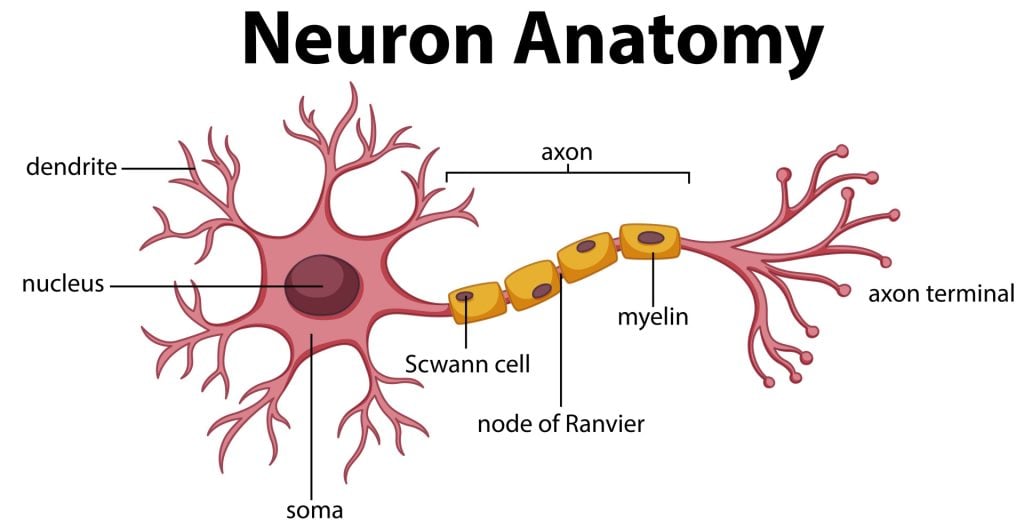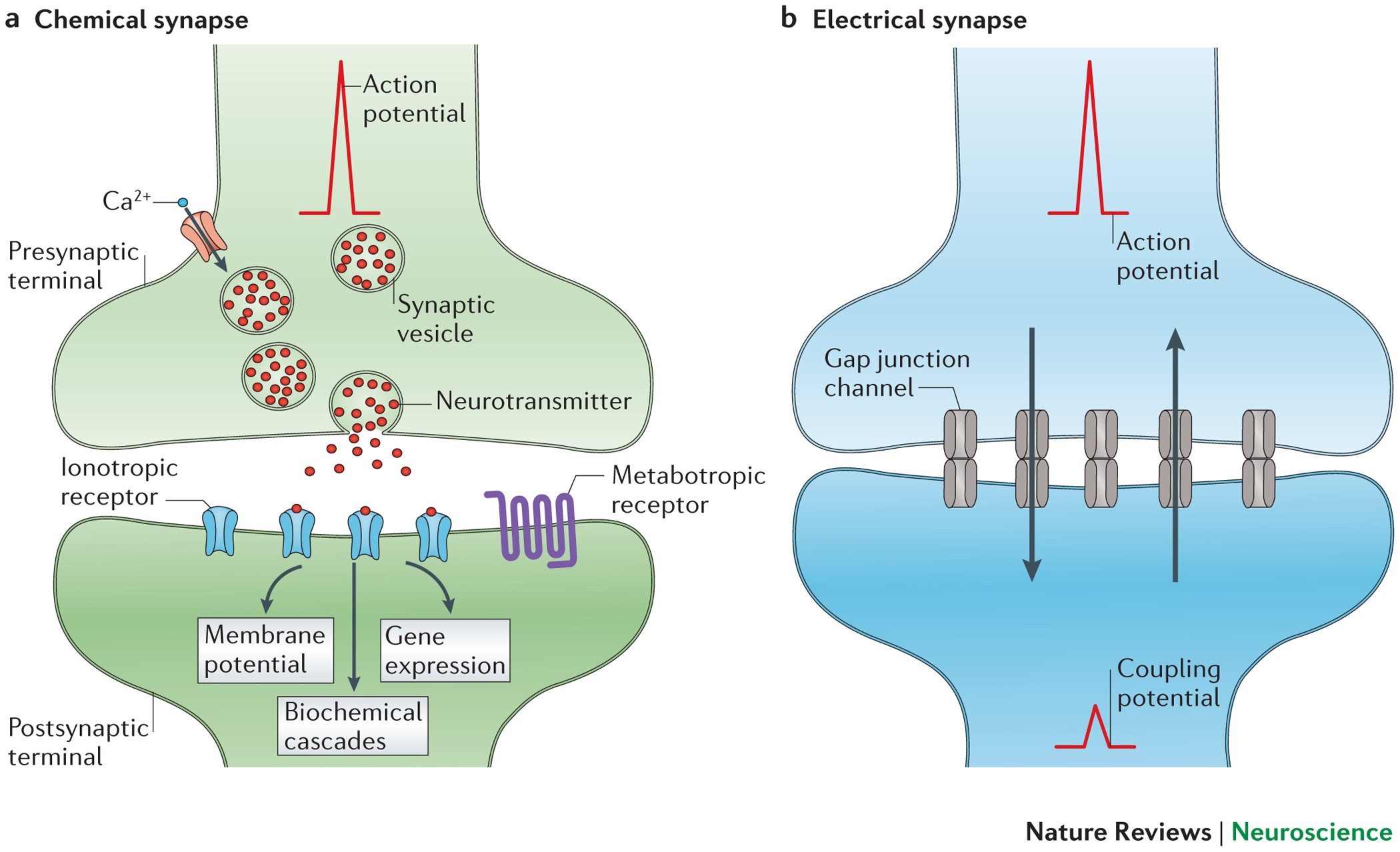Neural Process + Synaptic Process



Neuron Anatomy Functions
Dendrite: fibers receive information from electrical pulses (ions) and get processed by the cell body (soma) — receiver
Nucleus: the cell’s life support center.
Axon: fiber passes the message through its terminal branches to other neurons to muscles, or glands.
Axon terminals: form junctions with other cells and relay the message that the dendrites received and pass across the synaptic gap to the post-synaptic. — sender
Myelin sheaths: some axons are encased in myelin sheaths, a fatty tissue layer that insulates them. It also helps speed up neural processing.
Neuron Firing Stages
Resting period: neurons maintain a -70 mv charge when not doing anything.
Depolarization: the charge of a neuron briefly switches from negative to positive — triggers the action potential.
ex: Depolarization is pushing the ball up.
Threshold of Depolarization: stimulation to start the action potential
ex: Threshold is the top of the hill.
All-or-Nothing Principle: stimulus must trigger the action potential—
if a stimulus is strong enough to reach the threshold (about -55 mV), the neuron will fire an action potential.
if the stimulus is too weak and doesn't reach the threshold, nothing happens.
Action potential: an electrical signal that travels along a neuron to send information.
Extra
Reuptake: Unused neurotransmitters are taken back into the presynaptic.
Summary:
During the action potential, ions send messages/signals as an electrical charge (received by the dendrites) which get processed by the soma, travel down the axon, where the axon terminals send the message off.
In between the axon terminals and the dendrite fibers of another neuron is the synaptic gap where the electrical charges continue to travel down.
Neurons are not connected, but separated by a small space — the synaptic gap has a presynaptic neuron (receiving) and a postsynaptic neuron (sending).
Inside the presynaptic neuron, the electrical charge causes excitement, which fuses the presynaptic neuron with the vesicles — the neurotransmitters are packed into small sacs. They then fire into the postsynaptic neuron, releasing the neurotransmitters.
Sometimes the neurotransmitters will drift off to empty the cleft (synaptic gap), otherwise known as diffusion.
In some cases, reuptake will occur — the neurotransmitters will travel back into the presynaptic to be reused.
Another case is where neurotransmitters left in the cleft will turn into enzymes to create more neurotransmitters.